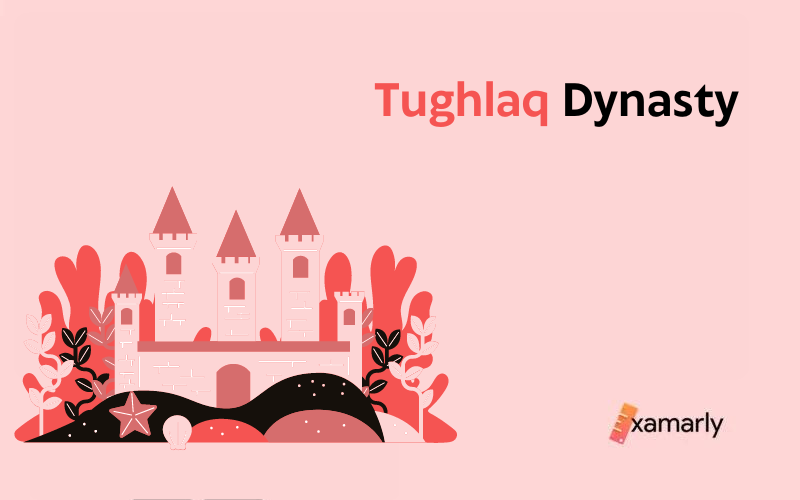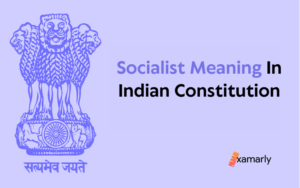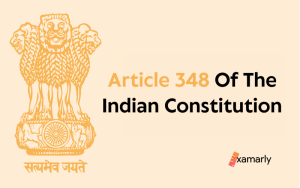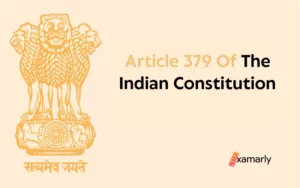The Tughlaq dynasty was chronologically the 3rd empire of the powerful Delhi Sultanate. They ruled large parts of the Indian subcontinent from 1320 to 1413. They were preceded by the Khilji dynasty and succeeded by the Sayyid dynasty. Who were the Tughlaqs? Well, essentially, they were people of Turko-Indian origin. Notable rulers like Ghiyas-ud-din Tughluq and Muhammad-bin-Tughluq belonged to this kingdom.
Read the article further to learn about the significant changes that happened during this rule. Additionally, this article will assist you in understanding the several emperors who presided over the empire along with the administration, art, and monuments that came to life. Read on to learn more as this article will be beneficial for the aspirants preparing for the UPSC exam. This article belongs to the medieval Indian History of UPSC Syllabus.
- History Of Tughlaq Dynasty
- Significant Tughlaq Dynasty Rulers
- Later Tughlaq Rulers
- Ghiyath ud din Tughluq Shah II
- Abu Bakr Shah
- Nasir Ud Din Muhammad Shah III
- Ala Ud Din Sikandar Shah I
- Nasiruddin Mahmud Shah Tughlaq
- Nasir-Ud-Din Nusrat Shah Tughluq
- Administration Of Tughlaq Dynasty
- Art And Architecture Of Tughlaq Dynasty
- Tughlaq Dynasty Coins
- The Decline Of Tughlaq Dynasty
- Conclusion
- FAQs
- The Capital Of The Tughluq Dynasty Was?
- When Did The Tughluq Dynasty Rule?
- Who Was The First Ruler Of The Tughluq Dynasty?
- Who Was The Last Ruler Of The Tughluq Dynasty?
- The Tughluq Dynasty Came After Which Dynasty?
- Which Dynasty Came After The Tughluq Dynasty?
- Who Is Called The Tughlaq Of The Chand Dynasty In Uttarakhand?
- Who Wrote The Book Tughluq Nama?
- Which Tughluq Ruler's Real Name Was Ulugh Khan?
History Of Tughlaq Dynasty
Foundation Of Tughluq Dynasty
Prior to 1320, the Delhi Sultanate was ruled by the Khaljis. Khusro Khan, its last king, was a Hindu slave who had been forced to convert to Islam. Khusro Khan had previously worked as the army’s general. Under the reign of Alauddin Khalji, Khusro Khan and Malik Kafur launched a number of military missions to expand the Sultanate and pillage non-Muslim kingdoms or Hindu kingdoms in India.
Khusro Khan came into power in June of 1320 as a result of a number of assassinations and arrests that took place when Alauddin Khalji passed away from sickness. By murdering every member of Alauddin Khalji’s family, including Mubarak Shah, Khusrau Khan started the widespread slaughter. However, because of this stunt, he receives little support from Muslim Amirs or Muslim nobility.
Ghazi Malik, who was then the governor of Punjab, was requested to bring an end to the violence of Khusro Khan. Khusro Khan was attacked by Ghazi Malik, who then slaughtered him and the Khokhar tribesmen army, claiming that he had taken control of the powers to govern the Delhi Sultanate. Henceforth the foundation of the Tughlaq Dynasty was laid.
Who Was The Founder Of Tughlaq Dynasty?
Ghazi Malik founded the Tughlaq dynasty. He was throned as Ghiyasuddin Tughlaq. The Muslim dynasty established by him ruled most of the Indian Subcontinent.
Significant Tughlaq Dynasty Rulers
Following is a list of the major rulers of the Tughluq dynasty. Brush through what made their reign unique. For a detailed study log on to Examarly where we have specific articles and extensive notes on each ruler of the Delhi Sultanate.
Ghiyas-ud-din Tughluq or Ghazi Malik
- He founded the Tughlaq dynasty in 1320 and ruled till 1325.
- His mother was from the Jat clan of Punjab, and his father was a Turk.
- He reinforced the North-Western frontier of the kingdom boundary. This ensured less attacks from Moghuls.
- Tughlaqabad was constructed by him.
- In Bengal, he put an end to Ghiyasuddin Bahadur’s uprising.
- He passed away due to the downfall of a wooden tent in 1325 while traveling back from Bengal.
- When he returned from his victory in 1325, the wooden pavilion used for his reception collapsed. It killed both him and his second son, Prince Mahmud Khan. Moroccan traveler Ibn Battuta claimed it was a plot devised by his wazir, Jauna Khan.
Remark: Candidates can learn more about Ghazi Malik by visiting the linked article.
Muhammad Bin Tughlaq
- Jauna Khan took over the throne after his father in the year 1325. He rose to the power under the name Muhammad bin Tughlaq.
- Muhammad Tughlaq was among the most well-informed scholars of his era.
- Muhammad Bin Tughlaq’s religious philosophy was based on great tolerance.
- Due to their improper implementation, his innovative policies earned him a negative reputation. The capital shift from Delhi to Daulatabad, the incorporation of token currency, the Doab experiment, and the expedition to Kangra were all failed projects.
- Vijaynagar (1336) and Bahamani (1347) were established under the reign of Muhammad Tughlaq.
- Muhammad Tughlaq added the city of Jahanpanah to Delhi.
Remark: Candidates can learn more about Muhammad bin Tughlaq by visiting the linked article.
Firoz Shah Tughlaq
- Born in 1309, Firuz Shah Tughlaq took over as Sultan of Delhi from his cousin Muhammad-bin-Tughlaq.
- He was the third monarch of Delhi’s Tughlaq dynasty. Between 1351 through 1388 AD, Firoz Shah Tughlak was in power to govern the kingdom of Delhi.
- Firuz Shah Tughluq’s contributions like gardens and irrigation canals included the ones linking the Sutlej to Ghaggar, the Yamuna to Hissar, and the Ghaggar to Firozabad. This earned Firoz Shah Tughlaq the title “Father of the Irrigation Department” in the eyes of the British.
- Kharaj, Zakat, Kham, and Jaziya taxes were levied under Firoz Shah Tughlaq’s reign.
Remark: Candidates can learn more about Firoz Shah Tughlaq by visiting the linked article.
Later Tughlaq Rulers
Ghiyath ud din Tughluq Shah II
- A grandson of Firoz Tughlaq, Tughluq Khan, supplanted him in 1388 and assumed the name Ghiasuddin Tughluq II.
- Within a year of his succession, he was executed by beheading owing to palace intrigue.
Remark: Candidates can learn more about Ghiasuddin Tughluq II by visiting the linked article.
Abu Bakr Shah
- Abu Bakr took over as emperor of the Tughlaq empire after Ghiyas-ud-Din Tughlaq II was executed.
- However Muhammad Shah, his uncle, also aspired to the throne and engaged Abu Bakr in a battle for it.
- Abu Bakr was overthrown in August 1390, and Muhammad Shah took over as king, ruling from 1390 until 1394.
- After his defeat, Abu Bakr was captured in the Meerut fort, where he later perished.
Remark: Candidates can learn more about Abu Bakr Shah by visiting the linked article.
Nasir Ud Din Muhammad Shah III
- From 1390 until1394, Muhammad was in power to govern the sultanate of Delhi. He presided over the Delhi Kingdom for four years before dying.
- The demise of Muhammad Shah occurred on January 20, 1394.
Remark: Candidates can learn more about Nasir Ud Din Muhammad Shah III by visiting the linked article.
Ala Ud Din Sikandar Shah I
- Ala ud-din Sikandar Shah, who was also known by the name Humayun Khan, was the son of Sultan Muhammad Shah Tughluq.
- Because he was the obvious choice to succeed, he assumed the imperial throne in 1394 C.E.
- However, he ruled for a period of about one month and sixteen days. After his death, Nasiruddin Mahmud Shah Tughlaq inherited the throne.
Remark: Candidates can learn more about Ala ud-din Sikandar Shah I by visiting the linked article.
Nasiruddin Mahmud Shah Tughlaq
- Between 1394 to 1413 AD, Nasir-ud-din Muhammad Shah Tughlaqreigned. Because the king had no surviving children, the dynasty’s demise was inevitable.
- During this time, the Sultanate had a number of setbacks, notably Timur’s invasion.
Remark: Candidates can learn more about Nasir-ud-din Mahmud Shah Tughluq by visiting the linked article.
Nasir-Ud-Din Nusrat Shah Tughluq
- Nusrat Shan or Nasrat Khan were other names for Sultan Nasir-Ud-Din Nusrat Shah Tughluq.
- Power was given to Nusrat Shah in 1394, and it lasted until 1398.
- The Delhi Sultanate was divided into two factions when he came to power.
- He was the last ruler of the Tughlaq dynasty.
Remark: Candidates can learn more about Nasir-Ud-Din Nusrat Shah Tughluq by visiting the linked article.
Administration Of Tughlaq Dynasty
Each ruler of the Tughluq dynasty contributed to administrative and economic experiments in the Sultanate. Let us briefly look at some prominent rulers that altered the administration in good and bad ways.
- Ghiyas-ud-din brought order back to his empire. He prioritized postal arrangements, judicial, irrigation, agriculture, and law enforcement. When Ghiyas-ud-din became Sultan, he began to control the administration. Since the Sultans of Ala-ud-din had drained the state’s finances and treasury, measures to control expenditure were implemented. He was a firm believer in the military as the country’s primary power. The Tughlaq dynasty was able to gain proper military and financial power during its reign.
- Muhammad Tughlaq‘s reign is known for 3 administrative changes – taxation in Doad, change of capital, and introduction of token currency. All were controversial moves that did impact the decline of the empire in years to come. The empire attempted to expand but failed miserably. People struggled as taxes were raised above 50%. Some farmers even left their lands and wanted to leave because of the tax increase. He then attempted reforms under his new monetary policies. He completely overhauled the coinage system, resulting in the creation of many new denominations of existing gold and silver coins. When he introduced the copper coins, the situation became even direr. He might have succeeded if he could have stopped people from forging new coins. However, in the absence of adequate security measures, the new coins began to lose significant market value.
- Following Muhammad Bin Tughlaq’s reign, Firoz Tughlaq instituted favorable changes. He repaid all of Mohammed-bin-Tughlaq’s Taquavi or agricultural loans. Firoz Shah Tughlaq increased the pay of revenue officers. He abolished all illegal and inequitable taxes.
List Of Relatable Articles
- Delhi Sultanate Administration
- Iqta System In Delhi Sultanate
- Diwan I Risalat: Ministry Of Foreign Affairs
Art And Architecture Of Tughlaq Dynasty
In the Tughlaq Dynasty, architecture and art coexisted together. Important design features, like the usage of arches and domes, were influenced by their Turkic background. Additionally, they constructed less colorful buildings, primarily out of quartzite, red sandstone, and other grey rock materials. The Tughlaq dynasty’s rulers, especially Firoz Shah Tughlaq, are credited for fostering the growth of Indo-Islamic architecture and were supporters of several construction projects.
The dynasty was famous for building one-of-a-kind tombs known as Tughlaq Tombs. In Indo-Islamic architecture, they were simple, monotonous, and heavy structures. In comparison to earlier and later Indian Islamic tombs, they resemble fortresses with walls surrounding them and have restrained decoration and embellishment. Tughlaq tombs were divided into three types: square, octagonal, and pavilion. The final type was the most common, consisting of a pavilion.
The city of Tughluqabad and Tughluqabad Fort was built by Ghiasuddin Tughlaq. The following ruler, Muhammad bin Tughlaq, also built a number of structures. He constructed a small fortress at Adilabad, near Tughlaqabad. He also constructed Jahan-pana (the fourth city of Delhi) by connecting the first and second cities with walls. Firoz Tughlaq, the next ruler, was a great builder who built many cities, forts, mosques, madrasas, and embankments. Firoz Shah Tughlaq constructed Firozabad (Delhi’s fifth city) between the ridge on the north and the Hauz-i Khas on the south. He is also known for the construction of the fortress names Feroz Shah Kotla.
To learn more about the Delhi Sultanate Monuments, visit the linked articles.
Tughlaq Dynasty Coins
- In the year 1330, Muhammad Tughlak issues brass coins that resemble to be silver. He introduced copper coins or token currency. He wanted to increase the volume of money in circulation while also preserving valuable metals like gold and silver. Due to this, copper coins with an equal face value to that of silver tanka were struck.
- However, official control over the minting of copper coins was not maintained. Large-scale production of the token coins was started by the goldsmiths.
- The markets soon refused to accept the new currency. Finally, the sultan halted the use of token money and agreed to swap copper coins for silver ones.
- The treasury was empty despite the fact that many people traded new coins.
The Decline Of Tughlaq Dynasty
- For 26 years, India was ruled by Muhammad Bin Tughlaq. He was renowned for his risk-taking endeavors. Many people think he was born ahead of his time since the majority of his endeavors were based on novel concepts but failed as a result of a lack of support from the populace. His notable endeavors included moving the capital from Delhi to Daulatabad, instituting token money, invading sections of China and Khurasan, and more.
- The state’s income decreased while he was governor. His nephew Firuz Shah Tughluq replaced him in 1351, and the following 37 years saw a prosperous end to his rule. Most of the aristocrats close to his predecessor were dismissed by him, but some of them were also put to death.
- The dynasty failed to provide a capable king after his death in 1388. The beloved grandson he had raised to be his heir passed away while he was still breathing.
- Even in Feroz Shah’s dying years, civil war broke out, and it continued under the administrations of Ghiyath-ud-din Tughluq Shah, Abu Bakr Shah, Muhammad Shah, Mahmud Tughlaq, and Nusrat Shah.
- The dynasty’s reign reached its lowest point with Amir Taimur’s invasion in 1398.
- However, the Sayyid Dynasty was established in 1413 and eventually brought an end to the dynasty when Khizar Khan, a former Multan governor, was crowned as Sultan of Delhi.
Conclusion
While brushing through a comprehensive history of India, the Tughlak dynasty is a must-learn owing to their contributions and impact on the places and rulers to come. Despite the shortcoming, the dynasty was gifted with some powerful rulers who left a mark on the economic, administrative, and military history of India.
FAQs
The Capital Of The Tughluq Dynasty Was?
The capital of the Tughluq dynasty was Delhi. But for a short period of time, Muhhamad Bun Tughlaq changed the capital to Daulatabad and later shifted it back to Delhi.
When Did The Tughluq Dynasty Rule?
The Tughluq dynasty ruled during 1320-1413.
Who Was The First Ruler Of The Tughluq Dynasty?
Ghiyasuddin Tughlaq was this first to govern the Sultanate of Delhi under Tughlaq Dynasty.
Who Was The Last Ruler Of The Tughluq Dynasty?
Nasiruddin Mahmud
The Tughluq Dynasty Came After Which Dynasty?
The Khilji dynasty
Which Dynasty Came After The Tughluq Dynasty?
The Sayyid dynasty
Who Is Called The Tughlaq Of The Chand Dynasty In Uttarakhand?
Baz Bahadur
Who Wrote The Book Tughluq Nama?
Amir Khusrowrote the Tughluq Nama. Amir Khusrau’s Tughlaq Nama talks about the dynasty rulers of Tughlaqs.
Which Tughluq Ruler’s Real Name Was Ulugh Khan?
Ulugh Khan was the real name of Muhammad bin Tugluq.






